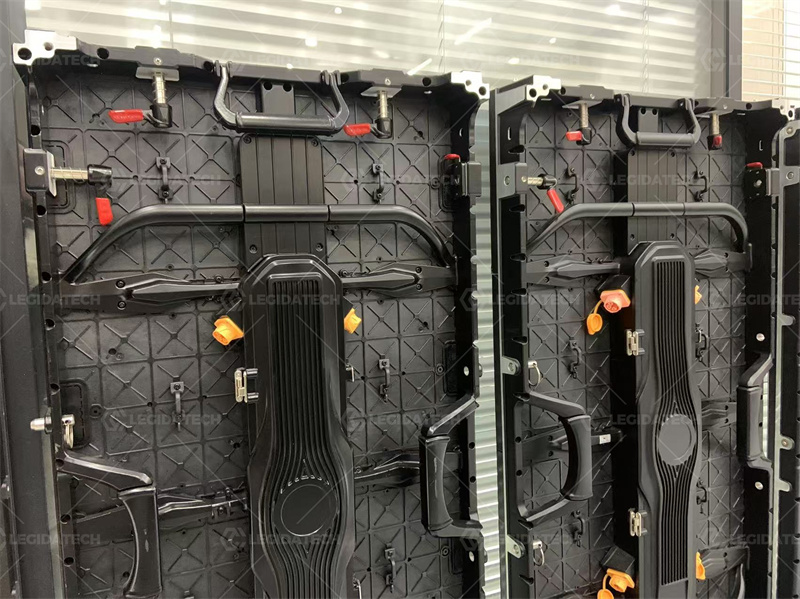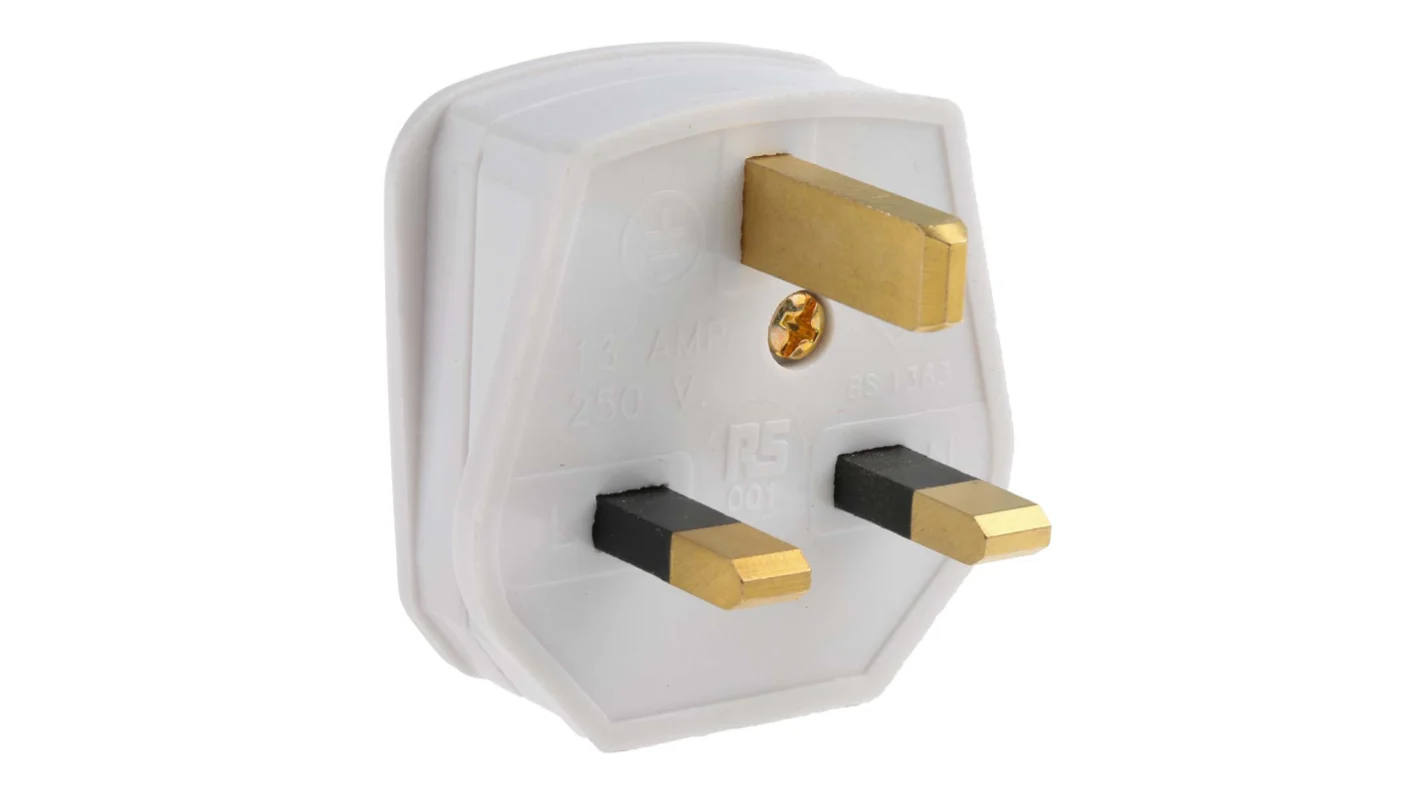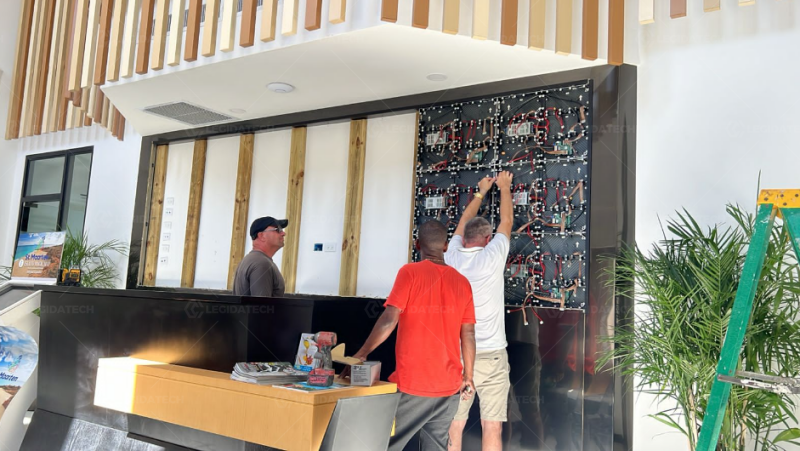UK Market FAQs
Q: How long does it take to ship from China to the UK?
A: Shipping time depends on the shipping method and customs clearance speed. Generally speaking, ocean freight takes about 20–40 days and is suitable for large orders. Air freight is faster, about 5–10 days, but the cost is higher. Customs clearance usually takes 2–5 days, so the overall delivery time needs to be planned in advance.
Q: Do LED screens made in China require a UK power adapter?
A: Yes, the standard voltage in China is 220V, while the UK is 230V. Most modern LED screens support a wide voltage range (AC 100–240V), but it is still recommended to use a BS1363 plug or a custom power cord that complies with the UK standard, and confirm that the supplier provides CE/RoHS certification for safety.
Q: Can I self-install an indoor LED screen?
A: If the screen is small and the installation environment is simple, self-installation is feasible. However, for large screens or ceiling-mounted or fixed installations, it is recommended that professional personnel perform the work to ensure safety and stability, and to avoid damage to the screen modules or control system.
Q: What is the frequency of routine maintenance?
A: Indoor LED screens are generally recommended to undergo a routine inspection every 3–6 months, including module tightening, dust removal, and power supply and control system testing. For clean offices or conference rooms, the maintenance interval can be extended, but the key is to maintain a clean screen and stable signal.
Q: What are the recommended pixel pitches for retail stores?
A: Retail environments typically require close viewing distances and the ability to display both detailed images and text. We recommend screens with a P1.5–P2 or P2.5 resolution. The specific consideration should be based on the store area, viewing distance, and budget, ensuring both visual quality and cost control.
What is an indoor LED display?
An indoor LED display is a display device composed of a large number of LED lamps, typically using a modular splicing method, capable of displaying high-resolution images, videos, and dynamic graphics.
Key specifications for indoor displays include pixel pitch, brightness, refresh rate, and color accuracy. Pixel pitch is typically measured in millimeters, such as P1.5, P2, and ص2.5. Smaller pitches produce finer displays, making them ideal for close-up viewing in meeting rooms, retail displays, or exhibitions.
Common Types
Fixed Indoor LED Displays: Suitable for permanent installations in offices, churches, or retail locations.

Rental/Event LED Displays: Suitable for temporary exhibitions, events, or staging, they are easy to transport and quick to assemble.

Indoor LED displays typically feature a modular design, allowing for easy replacement of individual modules and reducing maintenance costs. Modern displays also support high refresh rates and color calibration to ensure smooth images and accurate colors.
Selecting the Perfect Indoor LED Display Consider key factors that impact display quality, user experience, and future maintenance costs.
If you’re in a British company importing screens from China, it’s crucial to review the details to ensure the screens meet your needs.
Screen Clarity and Detail:
Pixel pitch is key to how fine and clear the display will be. Smaller pitches provide sharper images for close viewing, while larger pitches are better for distant viewing.
P1.5–P2: These are great for smaller spaces like meeting rooms or display areas where you’re looking from 1 to 3 meters away. They show off detailed text and high-def images really well.
P2.5–P3: Good for viewing from a distance, such as in churches or lecture halls, at 3–6 meters away. They offer excellent quality at a more affordable price.
![]()
Resolution and screen size are both important; it’s not just about pixel pitch but also the overall dimensions of the screen. A larger screen with a big pitch might look grainy.
If you try to go for ultra-fine pitches and high resolution, it can ramp up costs and make things trickier to set up. So, it’s wise to pick the specifications based on the size of your venue and how you intend to use it.
Screen Brightness and Distance:
The brightness of a screen plays a vital role in its visual performance across various settings. Indoor LED displays generally do not require extremely high levels of brightness. A bright range of 8.00–1200 nits is ideal for indoor use in places like conference rooms, classrooms, and exhibition halls.
In bright environments like near windows or in malls, choose a display with higher brightness for better clarity in sunlight.
Excessive brightness can cause glare and visual fatigue, while too little brightness affects image clarity. Thus, selecting the right brightness is critical to ensuring an optimal viewing experience.
LED Screen Performance:
The refresh rate and color accuracy play critical roles in determining the fluidity and color representation of dynamic content.
Refresh Rate: For optimal performance, it is recommended that indoor screens operate within a refresh rate of 60 to 120Hz. Lower refresh rates can lead to visual jitter or stuttering, especially noticeable during video playback or vibrant presentations.

Color Accuracy: Factory color calibration is standard, but you can adjust brightness, contrast, and color temperature with software after installation to maintain the original design’s color consistency.
This meticulous attention to color accuracy is particularly vital for retail advertising, product displays, and brand promotions.
Modular Design Features:
The modular design concept inherent in indoor LED screens serves as a tremendous asset, simplifying their transportation, setup, and upkeep.
Be sure to select LED module sizes like 250×250mm or 320×320mm, according to the overall screen dimension and your installation environment.

Benefits of Modularity: Streamlined Transport: The ability to separate the screen into several modules minimizes transportation risks and slashes costs. Smaller modules are easy to manage and connect, making it simple to assemble larger displays.
Straightforward Maintenance: Should a module fail, it can be replaced without the hassle of dismantling the entire screen structure.
Case design significantly impacts installation, ventilation, and heat management. Always refer to the supplier’s installation guide and inspect physical samples to ensure correct module fitting and optimal operation.
Electrical and Compatibility Considerations
When purchasing indoor LED screens from China to the UK, electrical compatibility must be considered in advance. The standard voltage in China is 220V, while in the UK it’s 230V.
Most modern LED screens come with a wide-voltage power supply (AC 100–240V), but it’s still recommended to confirm that the supplier’s power supply is CE and RoHS certified to ensure safe and stable operation.
Plug differences are also important. China commonly uses three-prong or two-prong plugs, while the UK uses the BS1363 three-prong square-pin plug.

When purchasing, ask the supplier for a custom power cord that complies with UK standards or for a safety adapter with sufficient power rating to avoid malfunctions or safety hazards due to incompatibility.
Power consumption is significantly affected by screen size, brightness, and pixel pitch.
Prolonged operation at high brightness levels can increase electricity bills, so it’s recommended to obtain detailed power consumption specifications from the supplier and choose screens with energy-saving power supplies or dimming functions to ensure optimal display quality while reducing energy consumption and meeting green energy conservation requirements.
Shipping and Logistics
Importing indoor LED screens from China to the UK requires careful consideration of shipping and customs clearance.
If this is your first time importing LED screens, there’s a lot you need to know, such as how to find a shipping company, what documentation is required for importation, and what fees to pay at the port. Alternatively, you can leave this to your LED screen manufacturer.
Many manufacturers, such as LEDGIDATECH, have established shipping companies who will arrange transportation to the nearest port and sometimes even handle customs clearance and other fees (depending on your country’s policies). This provides a one-stop solution for all import issues.
During transportation, LED modules are susceptible to vibration and moisture, so manufacturers typically use double-layered protective shipping boxes (foam and/or flight cases) to minimize damage. You can request production and packaging photos and videos to verify the condition of the shipment.
The choice of shipping method depends on how long you’ll use the screens. If you have sufficient time, sea freight is recommended. Sea freight is suitable for large quantities and offers lower costs, but it also takes longer, typically 20-40 days.
Air freight is faster, arriving in 5-10 days, making it ideal for small quantities or urgent orders. Regardless of the method, you should consider the production lead time (typically 15-30 days), shipping, and customs clearance times.
Overall, the time from order placement to installation is approximately 1-2 months, so be sure to check this information and allow time before purchasing.
Installation and Maintenance of Indoor LED Wall
The installation method of an indoor LED display directly impacts its visual quality, ease of use, and subsequent maintenance. Common installation methods include wall-mounting, ceiling-mounting, and floor-standing stands.
Wall-mounting is suitable for meeting rooms or classrooms located against a wall, saving space. Ceiling-mounting is often used in lecture halls or exhibition venues, allowing for large-screen suspended displays.

Floor-standing stands are ideal for temporary events or flexible layouts.
Before installation, it is important to assess the venue’s dimensions, load capacity, and safety regulations to ensure the screen is stable and secure while maintaining an optimal viewing angle for the audience.
Maintenance options are also a key consideration when selecting a display. Indoor LED displays typically offer both front-access and rear-access options.
Front-access design facilitates wall-mounted displays, allowing users to remove and replace modules directly from the front of the screen, saving space but requiring more precise mounting positioning.

Rear-access design is suitable for environments with more space, with modules removed from the rear and more suitable for larger or fixed-mount displays.
When choosing a maintenance method, consider the actual installation environment and daily maintenance requirements to avoid subsequent maintenance difficulties and additional costs.
The control system and software are key components in ensuring the stable operation of an LED display. Common brands like NovaStar and Huidu offer comprehensive software support, enabling screen debugging, signal input management, and remote control.
When purchasing, confirm the compatibility of the control system with the screen, and consider remote debugging capabilities.
This allows for quick troubleshooting and resolution of issues, even if the supplier is not located in the UK, improving efficiency and reliability.
How to Evaluate the Overall Cost of an Indoor LED Display
When purchasing an indoor LED display, product price is only the beginning. Many other factors often overlooked affect your budget.
Direct Costs :This is the first factor people consider, including the price of the screen itself. This price is typically determined by pixel pitch, brightness, size, and packaging method. A smaller pixel pitch improves image quality, but also increases costs.
Shipping and Taxes :When importing from China to the UK, you also need to consider shipping costs, customs duties, and Value Added Tax (VAT). Failure to calculate these costs in advance can easily lead to budget overruns.
Additional Expenses:Beyond shipping and taxes, there are other often-overlooked items, such as on-site installation labor and ongoing maintenance costs.
Summary and Purchasing Recommendations
Indoor LED displays offer high-definition, modular, and flexible visual experiences for venues like meeting rooms, exhibitions, retail spaces, and lecture halls.
While sourcing from China offers price advantages, planning for model selection, installation, electrical compatibility, shipping, and after-sales service is crucial.
As a professional LED screen supplier, LEGIDATECH provides high-quality products and technical support that meet British standards.
We recommend the Ehonor series, with its modular design and excellent color performance, making it suitable for a variety of settings, including meeting rooms, churches, retail spaces, and exhibitions.

Whether in fixed installation or flexible layouts, it delivers stable and clear visuals.
Through appropriate selection and support from a professional supplier, British businesses can achieve cost-effective procurement and create both beautiful and efficient indoor display solutions.




